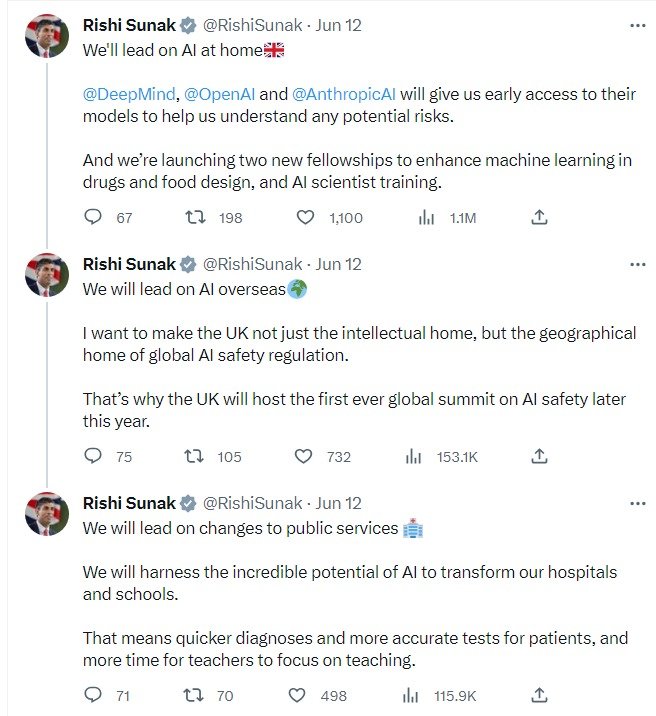I am delighted to present to How to Crack a Nut readers an outline of my recently published book Framework Agreements, Supplier Lists and Other Public Procurement Tools: Purchasing Uncertain or Indefinite Requirements (Hart Publishing, 2023). It is the result of years of doctoral research in public procurement law and policy at the University of Nottingham, and it incorporates my practical experience as well. After the end of the PhD, I updated and further developed the research for publication as a monograph.
Framework agreements, supplier lists, ID/IQ contracts, dynamic purchasing systems, and other tools of this kind are very widely used throughout the world; and tend to be quite complex too in some respects. Paradoxically, the subject has so far received rather limited attention, particularly when it comes to analysing the phenomenon systematically, across a variety of (very) different public procurement systems and/or international instruments. The book covers this gap, mainly through legal contextual analysis with comparative perspectives.
If in your professional or academic activity you come across questions involving matters of the kind presented below, then you are very likely to benefit from reading and studying this book.
Topics covered in the book
Given the complexity and multiple dimensions of the subject, I have structured some examples of possible questions/matters into a few categories, for illustration purposes, but please take an open and flexible view when going through them (as there is much more covered in the book!).
(A) Regulation and policy
aspects to consider when regulating (or seeking to improve the regulation of and policy regarding) tools for procurement of recurrent, uncertain, or indefinite requirements, in order to support the wider objectives of your relevant public procurement system, including (where applicable) how such regulation should be integrated with other existing regulation, for instance, with regulation mainly focused on ‘one-off’ purchases;
what can be learnt from various procurement systems or international instruments, and how can (certain) approaches or elements in those systems become relevant when regulating your system, including through adaptation and conceptual streamlining;
addressing legal review in relation to tools for procurement of recurrent, uncertain, or indefinite requirements.
(B) Regulatory interpretation and application
how can existing regulation on framework agreements, supplier lists, etc, be interpreted/applied in relation to areas where such regulation is contradictory, inconsistent, or silent;
to what extent is / should the general procurement regulation (usually relating to ‘one-off’ procurements) be applicable to framework agreements, supplier lists, etc, and addressing ‘grey’ or ambiguous areas in this interaction.
(C) Practice and operations
designing and planning the type of procurement arrangement (tool) that could be appropriate for specific circumstances, i.e., framework agreement or supplier list, and downstream, the sub-type/configuration of framework or supplier list, and its relevant features (choosing between various possible options), thus supporting procurement portfolio planning and implementation at the purchaser’s level; considerations on operating the designed arrangement;
what criteria and procedures could be used for awarding call-offs under a framework agreement without reopening competition at call-off stage (and using these in a balanced and appropriate way, depending on circumstances);
to what extent could a call-off under, say a framework arrangement, consist in a (secondary) framework, the conditions that should be taken into consideration for this approach, and circumstances when it can be useful.
(D) Research, education, and training
conceptual realignment, redefining, and adjustment to facilitate understanding of the phenomenon across various public procurement systems that regulate, address and classify (very) differently the arrangements/tools for procurement of uncertain or indefinite requirements;
taxonomies of potential arrangements, and identifying potential arrangements currently not expressly provided for in regulation;
conceptual framework for analysing procurement of uncertain or indefinite requirements – across various procurement systems or international instruments, or using a 360-degree perspective concerning a specific system or tool, rather than a perspective confined to a specific procurement system.
Scope of the research
These types of questions give a flavour of what the book does and its approach; certainly the book covers much more and offers an in-depth appreciation of this vital topic across public procurement systems and legal instruments.
To achieve this, and to be of wide relevance throughout the world, this monograph analyses in-depth seven different public procurement systems, using the same structure of analysis. The choice of systems and/or international legal instruments was carefully made to support such relevance, by taking into account a mixture of: legal and administrative traditions; experience with public procurement and public procurement regulation; specific experience in regulating and using procurement tools for recurrent, uncertain, or indefinite requirements; and of objectives pursued through public procurement regulation.
The book thus looks specifically and in context at: the UNCITRAL Model Law on public procurement, the World Bank’s procurement rules and policy for investment project financing, the US federal procurement system, the EU public procurement law and policy, and its transposition in two current EU member states – France and Romania – and the UK pre- and post-Brexit.
Systematic approach
By using the same structure for analysis both vertically (into each relevant tool under each procurement system or legal instrument investigated), as well as transversally, across all tools, systems and legal instruments investigated, the book discovers and reveals a whole ‘universe’ of approaches (current and potential) towards procurement of recurrent, uncertain, or indefinite requirements. The book presents this ‘universe’ in a clear and orderly fashion that is meaningful for readers anywhere in the world, and, on this basis the book articulates a discipline (a conceptual framework) for analysing and addressing the regulation of and policy on procurement of recurrent, uncertain, or indefinite requirements.
The purpose of this newly articulated discipline is both to offer an understanding of the overall phenomenon investigated (within and across the systems and legal instruments analysed in the book), and to enable the design and development of bespoke solutions concerning the regulation, policy, and practice of procurement of recurrent, uncertain, or indefinite requirements. By bespoke solutions in this context, I mean solutions that are relevant to and respond to the specific features and objectives of the procurement system in question or of the specific procurement exercise in question. From this perspective, I consider the book is of interest both for readers working in the procurement systems specifically analysed by the monograph, as well as for readers in many, many other procurement systems worldwide.
Main arguments and findings
With the vast coverage, complexity and variety of systems analysed, the arguments of the book (as well as findings) are multi-dimensional. The main ones are outlined here.
Firstly, I argue that whilst significant developments have occurred in this area of procurement of recurrent, uncertain, or indefinite requirements during the last decades, regulation in all systems / legal instruments analysed continues to be, in various ways and to various degrees, work in progress. To unleash the potential that these arrangements have for enhanced efficiency and effectiveness in public procurement, more balanced regulation is needed, and more work is needed on regulatory, policy as well as implementation matters.
The systems and legal instruments researched by the monograph tend to leave aside various potential configurations of arrangements, either by way of prohibiting them or by not expressly providing for them. Thus, a second main argument I make is that wider categories/configurations (or ranges) of potential arrangements should be expressly permitted in regulation, but subject to further – specifically tailored – regulatory controls and conditions concerning their use. These include procedural and transparency measures (which can be facilitated nowadays thanks to electronic means), as well as legal review and oversight mechanisms designed (and provided for in the relevant legal instrument) to address the specific matters that may arise in preparing and operating arrangements for procurement of uncertain or indefinite requirements.
Certainly, any such expansion of coverage as well as the specific safeguards referred above would be different (and differently approached) from system to system, so as to fit and respond to the relevant procurement context.
With a couple of notable exceptions, a trend in many of the systems or international instruments investigated in the book has reflected reluctance toward recognising and permitting the general use of supplier lists type of arrangements (like qualification systems in the EU utilities sector). The third argument I make here is that this approach is unjustified, and in fact it precludes purchasers from using a tool that can be particularly useful in certain situations if it is subject to appropriate procedural, transparency, and legal review measures, as discussed above.
Conversely – with the notable exception of the UNCITRAL Model Law on public procurement that can be regarded as a benchmark in many respects concerning the regulation of framework arrangements – a rather lax approach seems to govern framework type of arrangements. Regulation in many of the systems investigated in the monograph tend to permit a rather liberal use of framework arrangements, with insufficient conditions and/or controls in various respects, which can affect their beneficial use and/or may foster abuse. However, in other respects, the regulation could be too rigid. So, in addition to the need for more balanced regulation, my fourth argument relates to encouraging the use of framework arrangements for security of supply, and for planning for and responding to crises (catastrophic events), rather than mainly (just) for aggregation of (recurrent) demand, economies of scale, and administrative convenience.
Finally, I argue that all the above can be significantly supported by developing a specific area of public procurement regulation, to address – expressly, systematically, and directly – the complexities and features of procuring uncertain or indefinite requirements. In contrast, so far, the procurement systems / legal instruments analysed tend to address many issues arising from procurement of recurrent, uncertain, or indefinite requirements, indirectly through the lenses of ‘one-off’ procurements, by way of exception – or by implication – from the rules on ‘one-off’ procurements.
In my view, fundamental changes in approaching regulation and policy of framework arrangements and supplier lists in public procurement are strongly needed, as explained above. The sooner they occur, the better the chances for improvement in efficiency and effectiveness in and through public procurement.
For those wishing to deepen their understanding of this area, I am very pleased to attach here a voucher that provides a 20% discount of the book price. The book can be ordered using this link (and inserting the relevant discount code shown in the voucher.
I wish you an enjoyable and, most importantly, useful reading!
Șerban Filipon
Șerban Filipon
With over 20 years of international experience in public procurement professional consulting services, including procurement reform, capacity building, and implementation, as well as in procurement management and research, Șerban Filipon (MCIPS) holds a PhD in public procurement law from the University of Nottingham, UK (2018), and an MSc in Procurement Management awarded with distinction by the University of Strathclyde, UK (2006).
Șerban Filipon is senior procurement consultant.



























































